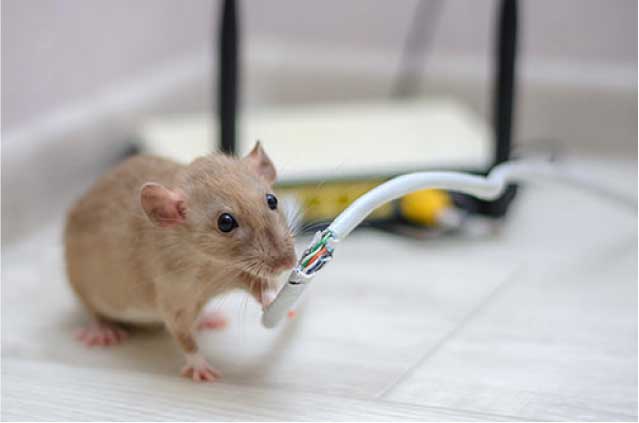Are rats or mice more likely to invade your property — if they haven’t already done so?
It’s a great question, but there’s no easy answer. Rats and mice are so numerous, so fast and so good at hiding that even rodent control experts can’t get a reliable head count.
Facts and Worst Fears
Rats, which number in the billions, are thought to be the most populous animals on earth. One female can birth around 50 rats per year. Mice are not far behind, and bats are somewhere in the running as well. Unfortunately, they are all robust creatures that can adapt and thrive in all kinds of conditions.
Rats and mice differ in size and appearance, but actual sightings are rare. Most homeowners who suspect an invasion have only telltale signs and behaviors to confirm their worst fears. Here are some red flags:
• Droppings, which resemble dark grains of rice.
• Suspicious noises within walls or above your head.
• Signs of foraging such as torn bread wrappers or cereal strewn in the pantry.
• Unexplained tears or holes in upholstery.
• Dark, greasy marks along baseboards or lower walls.
• Foul odor.
• Unusual pet behavior; for example, your dog or cat might become obsessed with a certain cabinet or the gap behind the fridge.
Of course, chewing marks in wood, cardboard, plastic, cable wire or other materials are a dead giveaway. All rodents gnaw incessantly. This is not only for ease of getting around. If rodents didn’t gnaw and grind their teeth, their incisors would never stop growing.
Hazards of Infestation
Rodents like your property just as much as you do. It’s a reliable source of food and water. It provides shelter from the elements and protection from predators. Without quality rodent control, rats or mice could raise their families at your place for generations to come.
Mice can get in through dime-size holes, and rats can wriggle through a gap the size of a quarter. They find tiny entry points around doors, windows, pipes, conduits and vents. In fact, the first step in effective rodent control is pinpointing weaknesses and sealing up cracks. Our technicians at O’Connor Pest Control have years of experience in identifying potential breaches.
The “ick factor” is motivation enough to schedule routine pest services, but there are even better reasons:
• Rats have been known to act aggressively when they’re afraid or when their offspring are threatened.
• Rodent fleas — and even inadvertent contact with rodent urine or feces — can spread serious diseases. You could also develop long-term stomach issues from food contamination if rodents set up house in your kitchen.
• At the very least, both critters make a huge mess. Even worse, they can do extensive damage to your structure. Stored furniture, books, documents and photographs are also susceptible.
Finally, rodents’ tendency to gnaw on electrical wires can pose a serious fire hazard. According to some experts, rodents are to blame for up to a fourth of all fires of unknown origin.
Back to Your Question
Which of your worst nightmares is more common: a mouse invasion or a rat invasion?
Again, that’s hard to say.
We can tell you that Norway rats and roof rats, the most common rat types in California, prefer the great outdoors. They will most likely settle in your shed, under the deck or behind the woodpile so that they can freely terrorize the neighborhood. However, if they find your attic, garage or basement hospitable, they might decide to move indoors with you.
Mice are smaller and less powerful than rats, so the safety of your house is inviting. Most people think they prefer mice to rats until they find droppings on pantry shelves, food prep surfaces, dishes, flatware, or food itself.
In the rats-versus-mice debate, neither is preferable. Don’t worry. Our California rodent control experts have effective, affordable solutions for both.
What is More Common in California: Mice or Rats Pest Control in Ventura CA?
Serving Ventura County | Santa Barbara County

